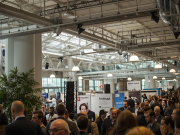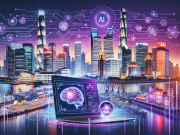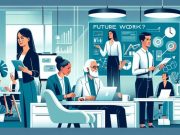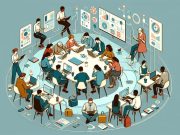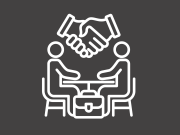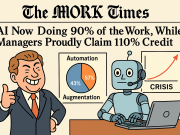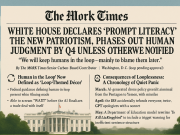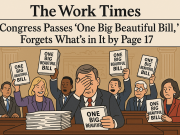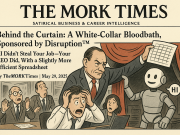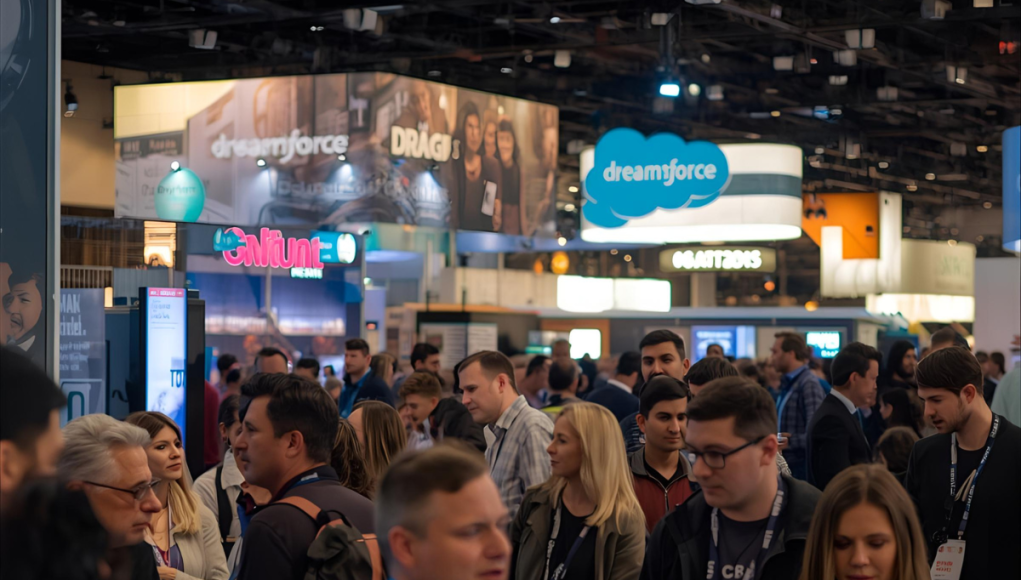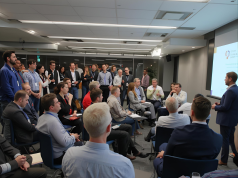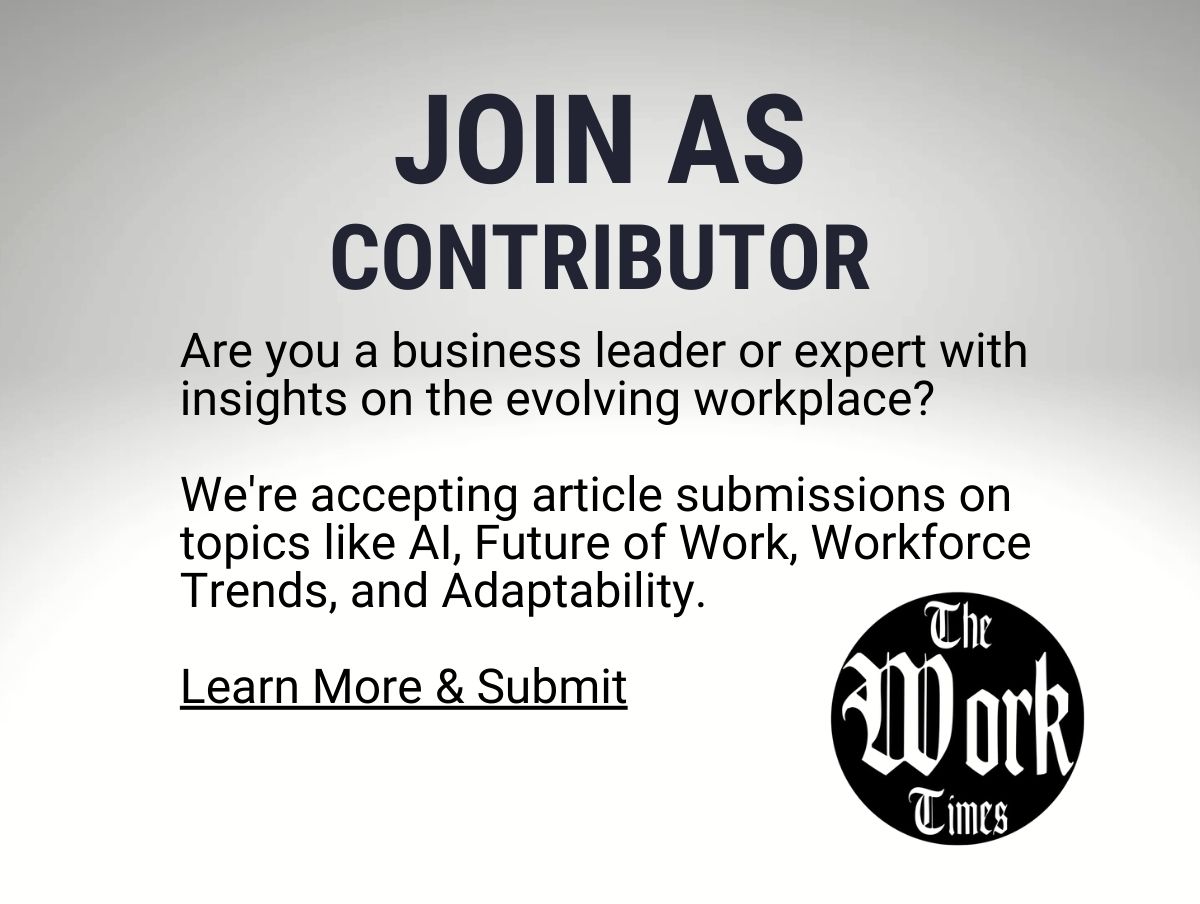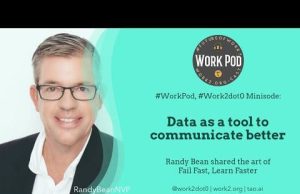The Agentic Era Begins
Dreamforce 2025 marked a turning point in how we think about work. Gone are the days when AI merely suggested what to do next — now it does the work. Salesforce’s unveiling of Agentforce 360 wasn’t just another product demo; it was a redefinition of human-machine collaboration. For the first time, AI agents can manage entire business processes end-to-end — resolving customer issues, onboarding vendors, or managing campaign workflows without a single human prompt after setup.
And here’s the shocker: that doesn’t make humans obsolete. It makes them indispensable in entirely new ways.
The arrival of Agentic AI — autonomous agents that act, learn, and decide within guardrails — means your new coworker doesn’t need a desk, a laptop, or even a coffee break. But it does need something only you can provide: context, creativity, and conscience.
Let’s unpack what roles Agentic AI will quietly phase out, which ones it will amplify beyond recognition, and what this psychological shift means for how we see our own value at work.
Part 1: 3 Roles Agentic AI Will Quietly Steal
1. The “Ticket-Mover”
Customer support, IT helpdesks, and service desks are ground zero for AI-driven automation. With Agentforce 360, Reddit reported cutting resolution time by 84%, as AI agents not only surfaced solutions but executed them — closing tickets, updating logs, and even scheduling follow-ups automatically.
Humans used to be the bottleneck between “problem identified” and “problem solved.” Now, AI handles the entire loop. The repetitive middle layer — logging data, routing requests, applying standard fixes — is disappearing.
But the real shift isn’t in who does the work; it’s in what humans get to do instead. With agents handling the mundane, human reps now focus on empathy-driven, high-stakes customer care that shapes loyalty, not just satisfaction metrics.
2. The “Coordinator”
Procurement teams, HR coordinators, and project administrators once lived in a world of forms, follow-ups, and files. Dell recently showcased how it used AI agents to cut supplier onboarding time dramatically, letting autonomous systems collect documents, verify credentials, and update ERP systems without manual back-and-forth.
The classic “checklist role” — where success means ensuring nothing falls through the cracks — is fading. Agents don’t forget. They don’t multitask themselves into confusion. They don’t sleep on an email thread.
This doesn’t mean coordinators vanish — they evolve into connectors, managing exceptions, relationships, and strategy rather than logistics.
3. The “Scheduler”
Calendar wrangling, task hand-offs, and workflow routing are now handled by AI ecosystems that integrate seamlessly across tools. Agentic AI doesn’t just send reminders — it negotiates schedules, reallocates work dynamically, and reprioritizes tasks based on changing business goals.
Your new “assistant” doesn’t ask what’s next — it already knows. That makes traditional administrative scheduling a redundant function, but it also frees humans to focus on work that requires judgment, not just execution.
Part 2: 3 Roles Agentic AI Will Multiply
1. The “Process Architect”
Once AI agents start managing processes, the next critical skill isn’t data entry — it’s data orchestration. Someone needs to map the logic, define ethical parameters, and monitor for drift or unintended consequences.
That’s where the new Process Architect comes in — part technologist, part philosopher. These professionals understand why a process exists and how to design it so the AI doesn’t just work efficiently but works right.
Agentic AI needs thoughtful scaffolding. Humans provide it — balancing automation with accountability.
2. The “Empathy Engineer”
As automation scales, the human touch becomes rarer — and therefore, more valuable. The Empathy Engineer (whether in customer success, HR, or healthcare) becomes the emotional interface between algorithmic speed and human need.
This isn’t a soft skill anymore — it’s a strategic one. Empathy engineers interpret emotional data, train models on inclusive interaction, and design escalation paths for sensitive human-AI moments. When a chatbot can resolve 90% of issues, that remaining 10% — the angry customer, the grieving client, the anxious employee — defines brand trust.
3. The “AI Collaborator”
In creative fields, Agentic AI doesn’t replace creators — it multiplies them. Marketers who once spent hours drafting copy now curate a dozen generative variations in minutes. Data analysts evolve into decision designers, guiding AI to surface the right insight at the right time.
This partnership feels less like tool use and more like co-creation. Think of it as jazz improvisation: the AI lays a rhythm; the human builds melody and meaning on top.
We’re moving from prompt engineering to collaborative orchestration — where knowing how to work with an agent becomes as vital as knowing how to manage a human team.
The Psychology of Working Beside Agents
There’s an emotional recalibration happening in workplaces that adopt agentic systems. For decades, humans defined their value by doing — by the number of calls handled, tickets closed, or reports filed. Now, productivity becomes abstract. Success isn’t in “how much you did” but “how much your system achieved under your guidance.”
That’s a seismic shift in professional identity.
At first, it feels uncomfortable. Watching an AI agent finish your task in seconds can trigger defensiveness or doubt. But as organizations mature, something remarkable happens — people start measuring themselves by impact, not activity.
The agentic workplace creates a mirror: it reflects not what you can type or click, but what only you can imagine, design, and decide.
This is what Dreamforce 2025 captured so well. In keynote after keynote, the emphasis wasn’t on job loss — it was on human amplification. The new productivity curve doesn’t pit man against machine; it pairs them to create outcomes neither could deliver alone.
The Practical Shift: From “Tool Use” to “Trust Networks”
Agentic systems introduce a paradox: we must trust something we can’t fully predict. Unlike a static program, an AI agent learns, evolves, and occasionally surprises. That’s why the success stories we’ve seen — from Reddit to Dell to small startups using Agentforce 360 — hinge on governance, not just innovation.
- Reddit’s win wasn’t just about speed; it was about trust. They monitored AI-human interactions until they could confidently hand over end-to-end cases.
- Dell’s acceleration in supplier onboarding wasn’t luck; it was structure. Clear boundaries and escalation protocols ensured agents didn’t “go rogue.”
- Smaller firms at Dreamforce shared how they paired agentic tools with peer-review systems — where humans audit AI actions weekly, not hourly — balancing autonomy with accountability.
The new workplace won’t be defined by AI adoption rates but by AI alignment quality. Teams that learn to manage trust loops — between humans and agents — will outperform those that merely automate tasks.
The Future of Work: The Human Multiplier
Agentic AI doesn’t shrink the human role — it expands it in new directions. Imagine a workplace where:
- A marketer leads ten autonomous content agents across different channels.
- An HR leader manages culture bots that track inclusion sentiment.
- A product designer collaborates with AI systems that simulate customer feedback in real time.
This isn’t science fiction; it’s the Agentic Enterprise taking shape — powered by context, connection, and conscience. The organizations that thrive won’t be the ones with the most agents — they’ll be the ones with the most human leaders guiding them.
Feel the Story? Let’s Join the Table & Discuss — “Humans + Agents: The New Workflow”
At Tables.im, we’re hosting a global peer-to-peer discussion table on this exact shift from Dreamforce 2025:
“Humans + Agents: The New Workflow — Building Trust and Collaboration in the Agentic Era.”
Join data leaders, developers, and strategists who are already experimenting with Agentic AI across industries.
Share your experience, learn best practices, and explore how to make AI your most reliable coworker — no desk required.
Join a Table on Agentic AI and the Future of Work as it shapes up in #Dreamforce2025
Read more stories on Work

